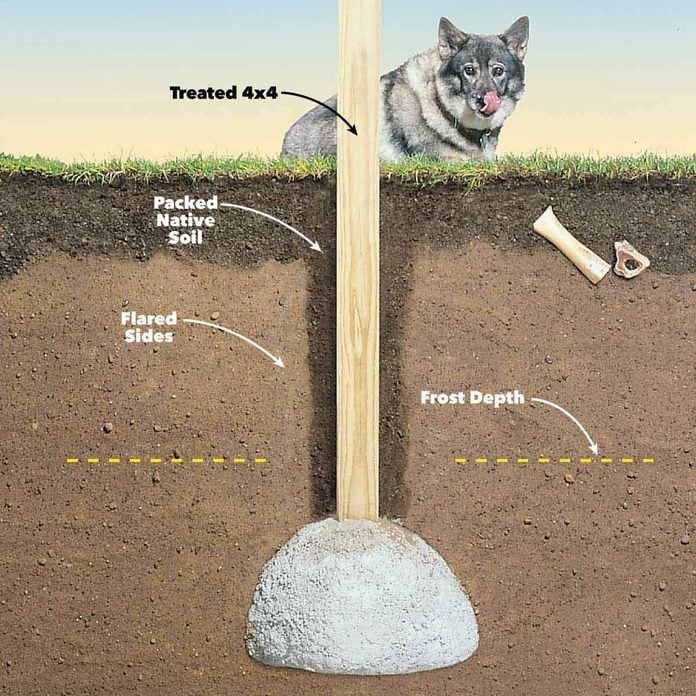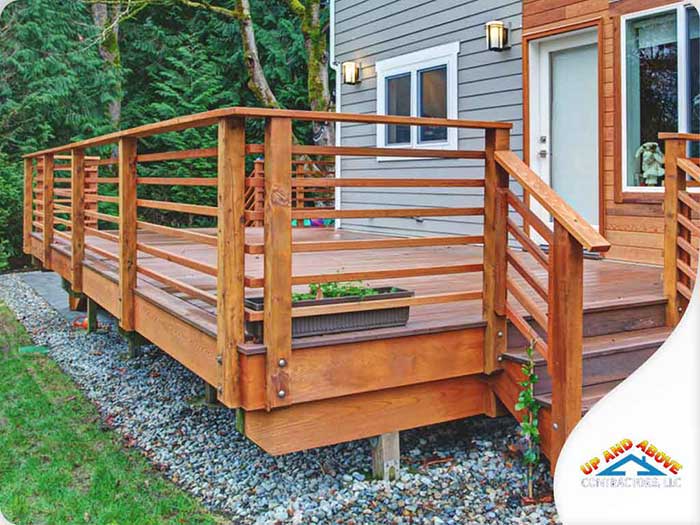From Principle to Concrete: The Critical Function of Deck Footings in Sturdy and Safe Decks
Wiki Article
Picking the Right Deck Footings for Security and Sturdiness
The durability and security of your deck depend greatly on the type of grounds you select, as they provide the necessary support and stability to hold up against the examination of time. In this discussion, we will check out the numerous kinds of deck grounds, think about the essential aspects to weigh when making a decision, and dive into the pros and disadvantages of various options.Sorts Of Deck Grounds
These grounds are composed of a cylindrical hole filled with concrete, which provides a solid structure for the deck articles. Concrete pier footings are fairly very easy to install and offer superb security, making them a prominent option for several deck projects.One more kind of ground is the helical heap footing. Helical heaps are steel shafts with helical plates affixed to them. These footings are set up by screwing them into the ground, which produces a secure structure for the deck. Helical stack footings are optimal for areas with tough soil conditions, as they can be installed in almost any kind of sort of soil. If required., they likewise enable for very easy adjustment and leveling of the deck.
Conversely, some builders choose precast concrete footings. These grounds are made of long lasting concrete and be available in numerous sizes and shapes to accommodate various deck layouts. Precast concrete footings are hassle-free to install and provide a steady base for the deck structure.
Ultimately, an additional alternative is the post-in-anchor footing system. This kind of footing entails driving a steel anchor right into the ground and affixing it to the deck message. It offers versatility in regards to positioning the deck messages and is suitable for decks with lightweight frameworks.
When selecting the right type of deck footing, it is necessary to think about factors such as dirt problems, deck lots, and neighborhood building regulations (Deck Footings). Consulting with a professional specialist or architectural designer can help make certain the appropriate footing is selected for a stable and safe deck
Factors to Take Into Consideration When Picking Grounds
When picking the ideal footings for a deck, it is critical to very carefully consider different variables such as soil problems, deck load, and adherence to neighborhood building ordinance. These elements play a substantial duty in making sure the security and longevity of the deck framework.The type of dirt on which the deck will certainly be constructed determines the type of footings needed. On the other hand, decks developed on clay or expansive soils might require grounds that can fit the soil's propensity to broaden and contract.
Another essential aspect is the deck load. The weight of the deck, consisting of the products utilized and any type of prospective live lots such as furnishings or events, have to be taken into consideration when choosing grounds. The grounds have to be developed to bear the weight of the deck and disperse it evenly to avoid any kind of structural issues or failures.
Last but not least, adherence to neighborhood building regulations is critical. Building regulations differ from region to area, and it is necessary to abide by the specific demands established by the regional authorities. Deck Footings. These codes ensure that the deck is built securely and satisfies the essential requirements for architectural integrity and load-bearing ability
Concrete Grounds: Cons and pros

Concrete footings provide a number of benefits and drawbacks when utilized as the foundation for a deck. On the positive side, concrete footings give outstanding stability and resilience.
Another benefit of concrete grounds is their versatility. They can be put into various shapes and sizes to suit numerous deck designs and configurations. Concrete grounds can be personalized to fit the specific demands and demands of the deck framework.
However, there are also some downsides to utilizing concrete footings. This can boost the total expense of the deck task and might call for specialist support.

Helical Piers Vs. Sonotubes: Which Is Better?
In considering the structure alternatives for a deck, the comparison in between helical piers and sonotubes is essential in determining the superior choice. Helical piers, also called screw stacks, are steel shafts with helical plates attached to them. They are turned right into the ground utilizing hydraulic equipment, offering a steady and durable structure for the deck. On the various other hand, sonotubes are cylindrical types constructed from cardboard page or fiber material that are loaded with concrete. They are placed in an opening went into the ground and offer support for the deck.When it concerns stability and resilience, helical piers have the upper hand. The helical plates on the piers create a solid grasp with the dirt, moving or stopping any movement of the deck. This is particularly valuable in areas with unpredictable or shifting dirt conditions. Sonotubes, on the other hand, depend exclusively on the concrete loading for stability, which may not use the same level of toughness and resistance.
In regards to setup, helical piers are relatively simpler and faster to set up contrasted to sonotubes. The hydraulic machinery utilized to turn the piers into the ground makes sure a efficient and fast procedure. Sonotubes, on the various other hand, require excavating openings and putting concrete, which can be labor-intensive and lengthy.
Additionally, helical piers are a more functional option. If required, they can be utilized in different soil conditions and can be adjusted or strengthened. Sonotubes, on the other hand, may call for added assistance, such as rebar, in specific dirt conditions or areas with high lots requirements.
Choosing the Right Footings for Your Deck's Dimensions
For optimal structural honesty, it is vital to very carefully choose the appropriate grounds that align with the measurements of your deck. The dimensions of your deck, including its size, size, and elevation, play a considerable function in establishing the type and dimension of grounds required.When selecting grounds for your deck, it is essential to take into consideration the load-bearing capability of the soil. The weight of the deck, combined with the weight of any furnishings or individuals on it, applies a substantial pressure on the footings (Deck Footings). As a result, it is critical to select grounds that can sufficiently sustain this weight without sinking or shifting over time.
The shapes and size of the footings should likewise be considered. Larger decks with better dimensions require bigger footings to provide sufficient stability and support. The form of the footings, whether they are rounded or square, depends upon the style and format of the deck. Additionally, the depth at which the grounds are set up need to be identified based upon the frost line in your region to avoid any type of heaving or changing due to freezing temperatures.
Conclusion
In conclusion, selecting the best deck grounds is crucial for ensuring security and durability. Variables such as the type of grounds, the deck's measurements, and the pros and disadvantages of different options should be thought about.These grounds are composed of a round opening loaded with concrete, which offers a strong structure for the deck messages. Concrete official source pier footings are fairly simple to Bonuses mount and provide outstanding stability, making them a popular choice for several deck projects.
Precast concrete footings are convenient to mount and give a steady base for the deck framework.
It provides flexibility in terms of positioning the deck messages and is suitable for decks with lightweight frameworks.
Concrete footings provide numerous advantages and negative aspects when utilized as the structure for a deck.
Report this wiki page